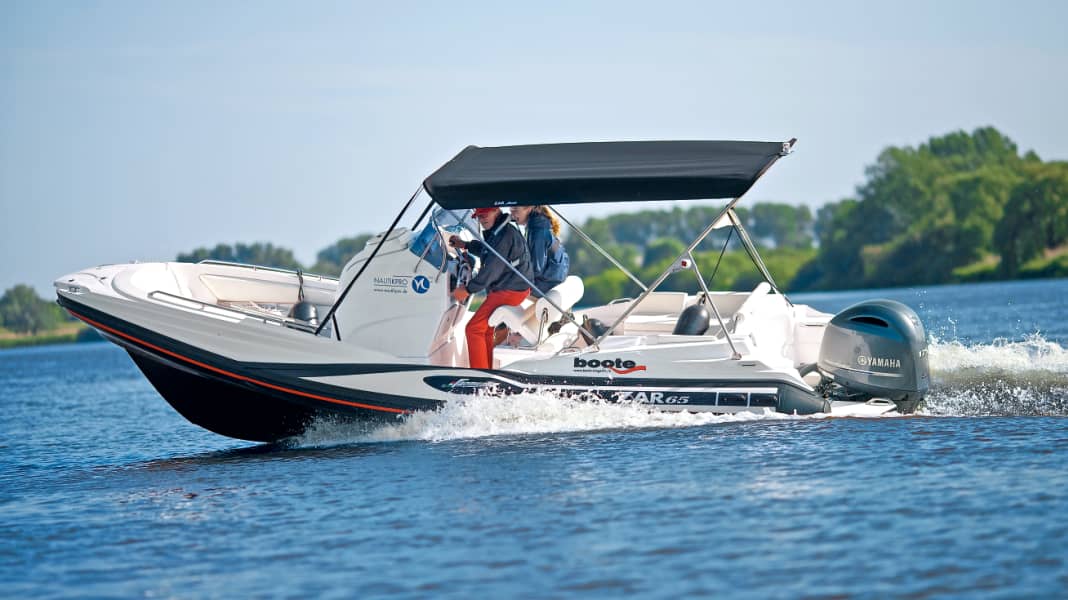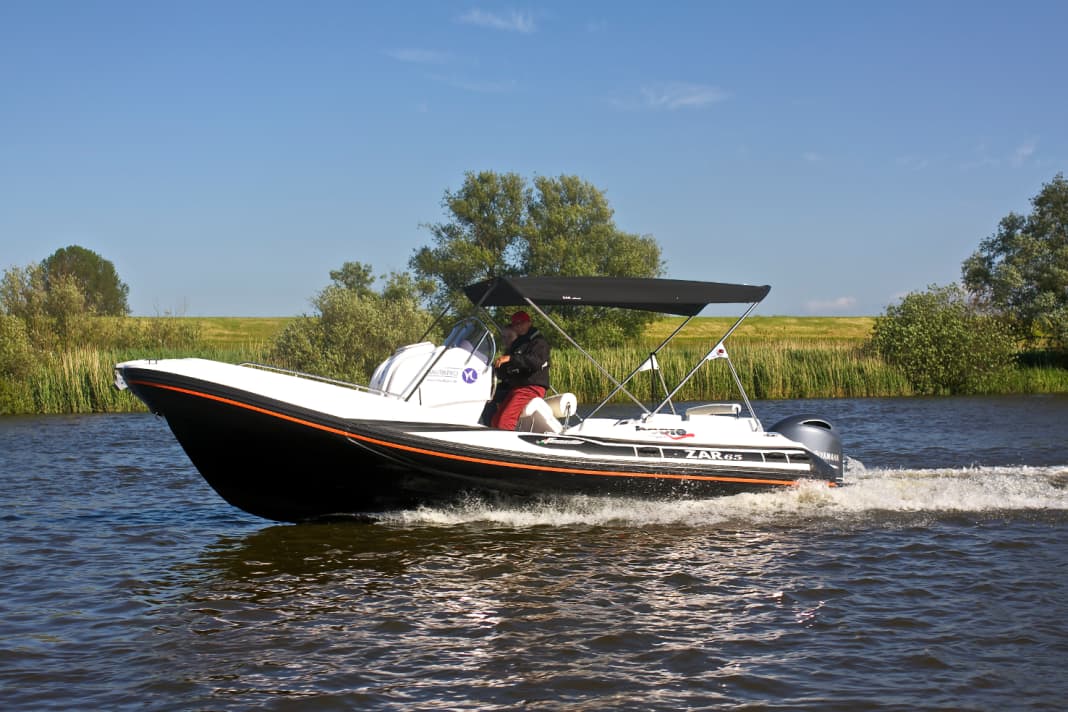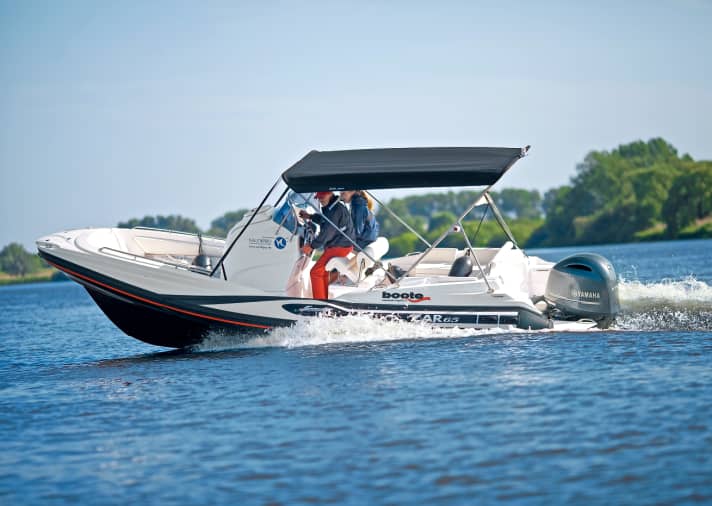







RIBs (Rigid Inflatables Boats) are available in a wide variety of sizes and designs. These range from yacht tenders of a good 2.00 metres to offshore racers and lifeboats for the high seas. Our test boat, the ZAR 65 (see also BOOTE 1/09 and 7/09) is right in the middle and is classified as CE category B for sailing outside coastal waters.
Travelling experience with a ZAR 53 has already shown that ZAR boats cope well with rough water (see BOOTE 1/08 and 4/08). Our test boat is also convincing in hard choppy waves, such as those in Hamburg harbour, skipping over them smoothly, dryly and with a stable course. This is due to the deep V of the plastic hull, to which the support tube is firmly and cleanly glued. The rest of the workmanship is of the usual good ZAR quality.
The lines are located in the fuselage in a protective tube and are held in shape in the large rear box by spiral straps in clamps. The commendable installations include an extra fuel filter - a stopcock, which is designed as a three-way valve and makes it child's play to connect a reserve tank. Although our ZAR 65 test combination with the brand new 175 hp Yamaha and the standard built-in tank (240 litres) can travel a remarkable 237 nm at 19.7 knots, this reserve option is practical. Yamaha's new model takes the ZAR from displacement to planing speed in no time at all, without obstructing the view to any great extent. In general, the Yamaha shows "snappy throttle response" across the entire rev range. Responsible for this are the 2.8 litre displacement distributed over four cylinders, 16 valves and the electronic injection system.
To achieve fast, tight turns, the Yamaha should be trimmed all the way to the transom. With the ride trim about 2/3 on the display, the hull tends to rock. The hydraulic steering is smooth, and the "deflections" are only slight when slaloming or twisting the steering.
Conversely, this means that you have to crank more when manoeuvring and mooring, but this turned out to be no problem in practice. The skipper only has to counter-steer a little at slow speed when a person moves back and forth in the boat and the hull moves a little in the direction of the weight shift. Without "weight irritations", the ZAR tends to yaw slightly.
All these manoeuvres are best performed standing up, with your backside leaning against the folded-up driver's seat cushion, as sitting down means that shorter people in particular have little chance of looking properly over the raised driving position. Half standing, the skipper has a good grip on the steering wheel and single lever control. The view of the instruments is also perfect in this driving position. Plus/minus: The panel with the toggle switches next to the steering wheel is easy to operate, but is located in such a way that it is easy to accidentally switch gears with your legs.
The aft seating area in the suite version can be used for chatting and drinking, but can also be converted into a sunbed for sun-seekers. The shipyard has provided a split bathing platform and 3-step ladder for easy entry and exit from the water. A stern shower is available after the bath. The biggest highlight, however, is located under the driving position: a pump toilet and a small washbasin with pull-out shower hose and floor drain. Although this space has limited headroom and dimensions, a 1.80 metre tall person can comfortably reach the toilet with a hinged door.
Conclusion
The ZAR 65 is a RIB with good rough water characteristics and plenty of room for plenty of people to spend an eventful day on the water.
